Art Inspired by Traditional Forms
Coast Salish spindle whorls housed in museum collections were studied by Susan Point, Stan Greene, Charles Elliott and other Coast Salish artists who sought to revitalize Coast Salish art in the late 20th century, a time when most Northwest Coast artists were working in more northern styles. The circular form of the whorl has continued to inspire many 21st century Coast Salish print makers.
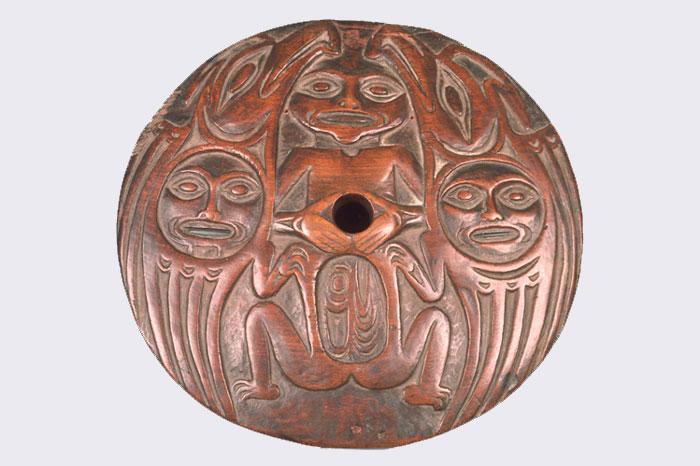
Spindle Whorl
19th century Coast Salish spindle whorl, DeMenil private collection.
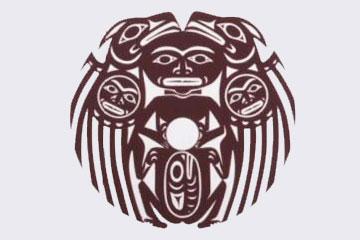
Greene Print
Human with Thunderbirds, Stan Greene, Coast Salish/Semiahmoo, silk screen print, 1979, Margaret Blackman and Edwin S. Hall, Jr. collection, Burke Museum cat. no. 1998-90/317.

Spindle Whorl
19th century Coast Salish spindle whorl, Canadian Museum of Civilization, cat. no. VIIG8.
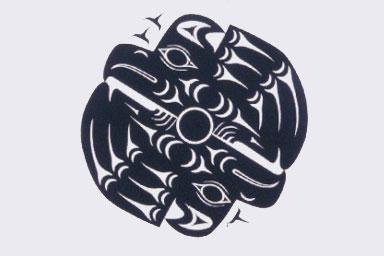
Point Print
Twin Thunderbirds, Susan Point, Musqueam, silk screen print, 1981, Simon Ottenberg collection, Burke Museum cat. no. 1992-48/2.
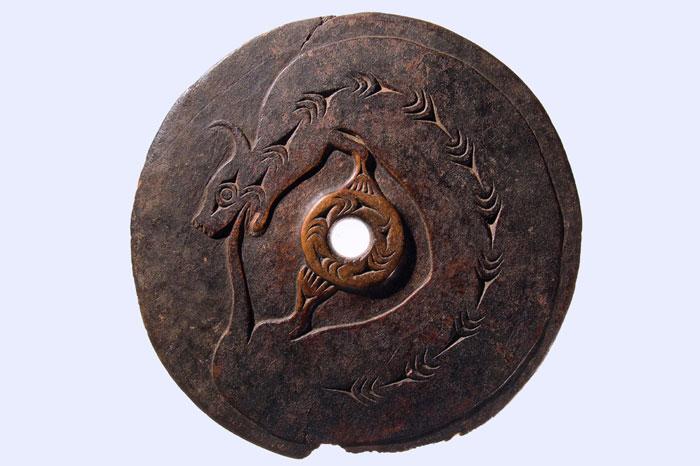
Spindle Whorl
19th century spindle whorl, National Museum of Natural History, Smithsonian Institution, cat. no. 221179-E.
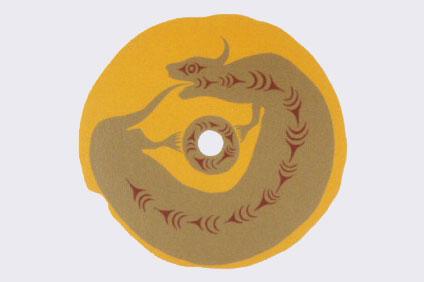
Wells Print
Leslie Wells (Coast Salish), Untitled, 1991, silk screen print, Simon Ottenberg collection, Burke Museum #1999-151/27.
Susan Point has also experimented with several designs inspired by a wooden comb in the Peabody Museum of Archaeology and Ethnology.
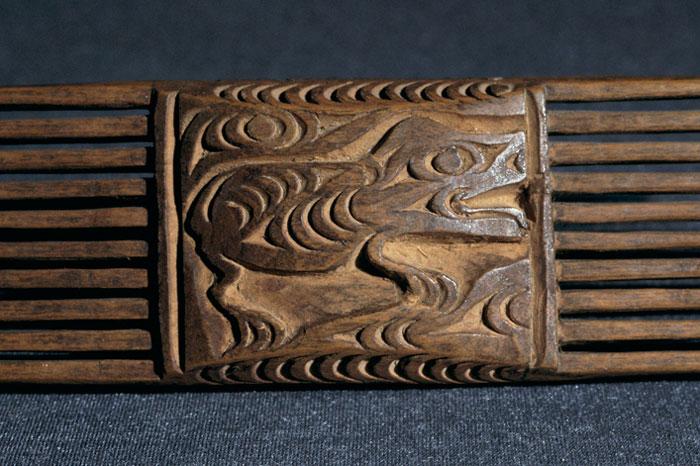
Peabody Comb
A four-legged animal is shown with a clear profile, its tail curled up over the head and negative crescents and trigons defining the ribs. Courtesy of the Peabody Museum of Archaeology and Ethnology, Harvard University, 95-20-10/48393.
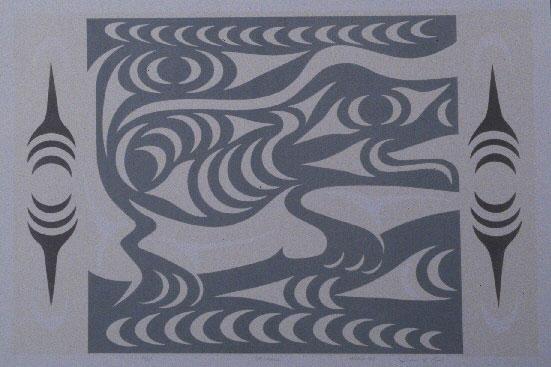
Point Print "Squirrel"
“Squirrel,” Susan Point, Musqueam, silkscreen print, 1989, Simon Ottenberg Collection, Burke Museum cat. no. 1997-123/10.
Suquamish elder Ed Carriere was inspired to weave his “Mountain, Lightning and Icicle” basket after studying a Suquamish basket in the Burke Museum collection in 1992.
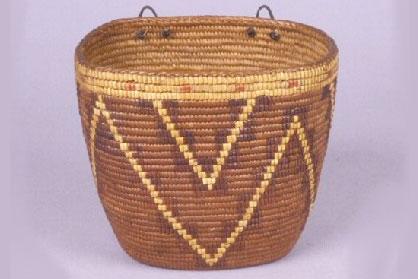
Suquamish Basket
Suquamish coiled basket, Burke Museum cat. no. 2.5E528.

Ed Carriere Basket
Suquamish elder Ed Carriere was inspired to weave his Mountain, Lightning and Icicle basket after studying a Suquamish basket in the Burke Museum collection in 1992. Burke Museum cat. no. 2007-5/1.
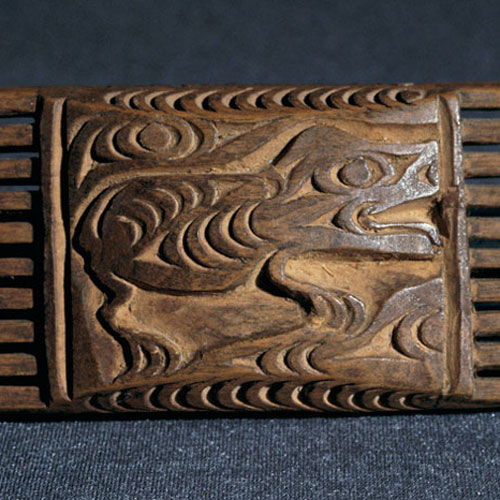
See More Coast Salish Art
Continue exploring the history of art in this region, what makes Coast Salish art distinctive among the many regional Northwest Coast styles, and the vitality of contemporary Coast Salish art.
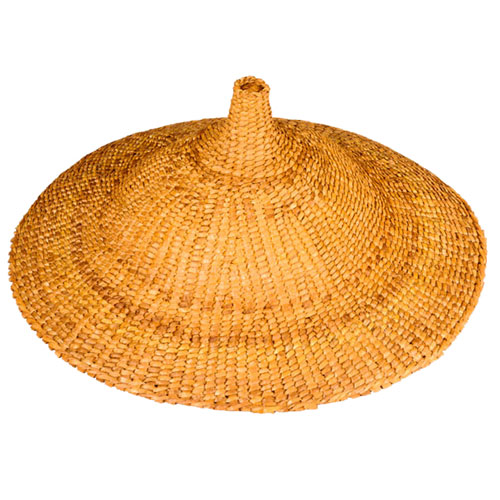
Additional Coast Salish Art Resources
Search additional resources related to the First Peoples who speak the Coast Salish language.
